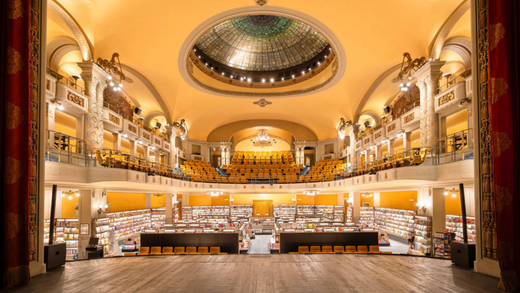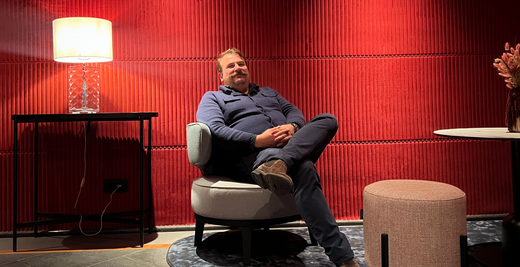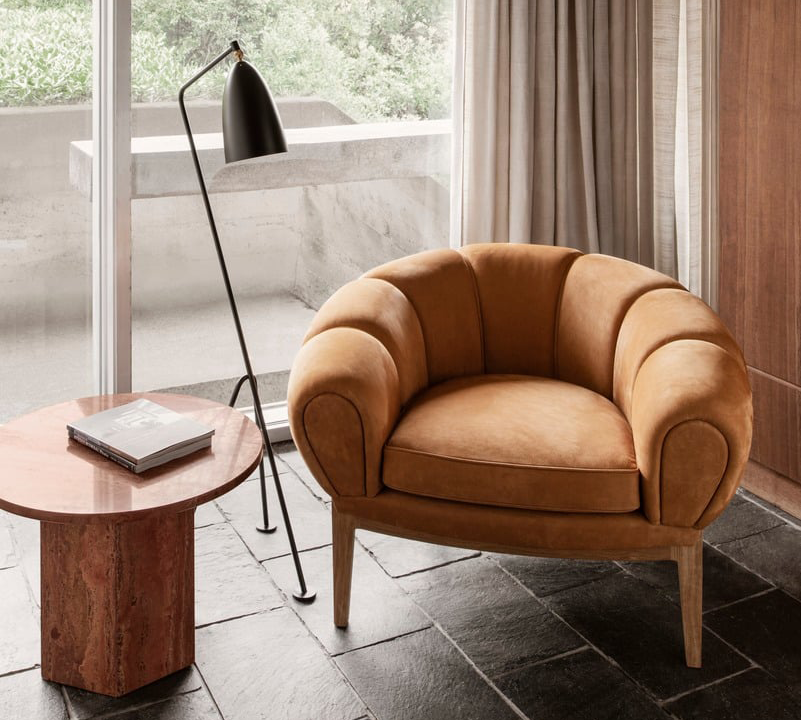A journey through the cinemas of Florence: tradition, contemporary design and ever-evolving culture.
Florence is not just domes, historic buildings and Renaissance art: it is also a city that knows how to innovate without forgetting its roots. This also applies to cinema spaces, places where architecture tells stories of transformation and rebirth, blending the charm of tradition with contemporary functionality.
From lovingly restored historic cinemas to new multifunctional spaces with cutting-edge design, prepare for a journey through some of Florence’s most fascinating theaters.
Giunti Odeon: History and modernity under an Art Nouveau dome

One of Florence's jewels is the Giunti Odeon , housed in the magnificent Palazzo dello Strozzino. This space, built in 1922 as a movie theater, has recently regained its splendor thanks to a renovation led by the Benaim architectural studio. Under the aegis of the Ministry of Culture, the restoration has preserved the original Art Nouveau details: decorations, floors and the majestic central dome shine as they once did. The result? A multifunctional place that combines a bookshop , a café bistro and an original movie theater , capable of offering evening screenings and spaces for reading. The lighting, designed down to the smallest details, uses contemporary-design projectors that enhance the refined architectural details, creating a unique atmosphere.
Cinema Adriano: Tradition and innovation in one place

Cinema Adriano , inaugurated in 1955 with " Le ragazze di San Frediano " by Valerio Zurlini, is one of the symbols of Florence's cinematic history. Conceived from the beginning as a space dedicated to cinema, its amphitheatre shape guarantees optimal viewing from any seat, a detail that distinguishes it from many modern multiplexes. Cinema Adriano was a pioneer in the adoption of cutting-edge technologies: among the first to introduce Dolby Stereo, it has always kept up with innovations, such as digitalization and the high-performance 3D system in the Sala Zaffiro. Equipped with satellite connections for live events, concerts and operas, this cinema also offers an internal bar, ideal for enjoying a snack during the screenings.
Cinema Flora e Fiorella: Rebirth of historical spaces

After a particularly difficult period for movie theaters, the Flora and the Fiorella are the new protagonists of a real revolution. The Flora , located in Piazza Dalmazia, is expanding its spaces: from two to five screens, with the addition of an exclusive room with 22 seats, designed to guarantee comfort and elegance. The Fiorella has also benefited from similar interventions, going from two to three rooms. These interventions demonstrate that cinema is not only an art form, but also a social experience that continues to live, challenging the streaming era and reaffirming the value of shared screening.
Cinema Astra: Innovation and multifunctionality

In Piazza Beccaria, the Cinema Astra is an example of visionary architecture . Thanks to the project curated by the Archea studio , this space, reopened by Banca Cambiano, is now a multifunctional place. The hall, equipped with a system of retractable seats, transforms to host events, meetings and shows. With a seven-meter screen and a varied program curated by Fondazione Stenses , the Astra is a cultural center that combines technology and respect for the environment, thanks also to the collaboration with Publiacqua to reduce the use of plastic. It is the demonstration of how a cinema can adapt to modern times without losing its soul.
The Company Theatre: A Window to the Future

In via Cavour, the Teatro della Compagnia , designed by the architect Adolfo Natalini , is an example of how modern architecture can fit harmoniously into the historical context of Florence. It was the designer himself who defined the structure, narrow and developed in depth, a “ hidden architecture ”. Today it is considered the home of documentary and film festivals in Florence.
A heritage to be protected
Despite the successes, the history of Florentine cinemas is also marked by closures and transformations. Many historic theaters, such as the Manzoni or the Universale , have been converted or abandoned, leaving a void in the social and cultural fabric of the city. However, spaces such as the Giunti Odeon demonstrate that it is possible to preserve the past and, at the same time, embrace the future. These spaces tell a story of resilience and innovation , and a journey through these theaters is a way to rediscover the beating heart of Florence!




